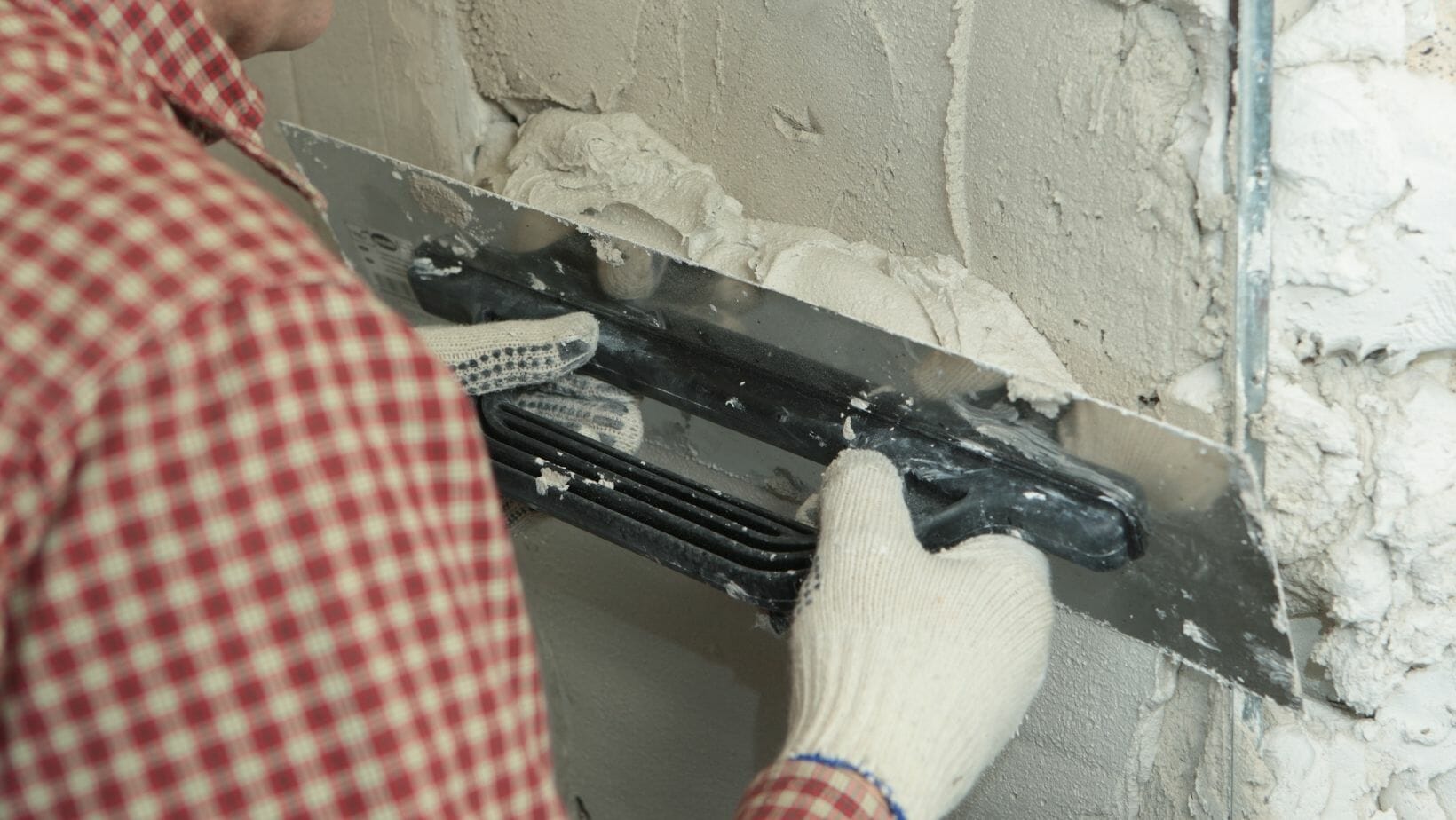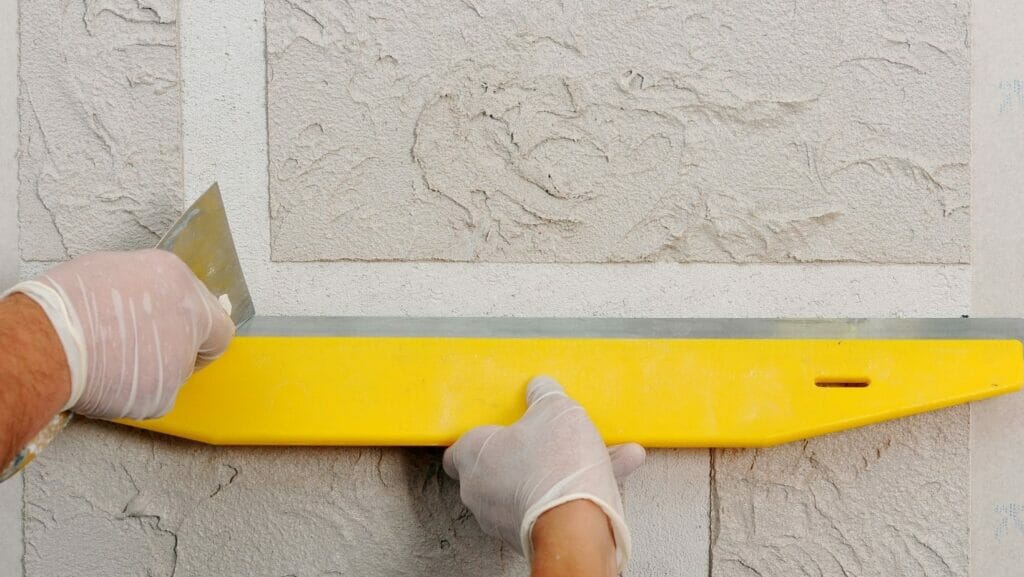
When skim plastering, it’s worth learning all about plaster beading online. This will teach you how to properly finish your plastering project using angle and corner beads. Learn when and which type of stop bead to use as well as how to apply them confidently in this straightforward tutorial.
It’s not difficult to create a sharp corner while skimming with angle beads or topcoat beads. The most essential thing is to have the beads on the wall so they give a consistent thickness to the plaster you will apply against them, whether you’re putting them on drywall plasterboard or a base coat you’ve previously plastered. It’s pointless to have the world’s most upright corner if you can feel the angle bead through it. It will soon be seen through the paint or wallpaper.
Plaster bead in the corner
If working with drywall, we like to nail the beads in place since there should always be a timber plank beneath the area where the two halves of plasterboard meet. When applying a base coat plaster, we find it more convenient to lay the beads in a dollop of skim and scrape off the extra. Because most people who have attempted plasters know, skim hardens quickly!
The bead sits on the corner in the image above. Pinch the two sides together to make sure that the apex or ridge of the bead sticks out a little. Then cut it to length with tin snips that are clean and sharp. To make a level corner, attach the tack or skim it in place with your spirit level for plumb. Nothing looks worse than a leaning corner contrasted against a plumb window frame.
Plaster bead in The corner
If you’re employing nails, make sure they’re firmly in place. The most aggravating type of problem is when a nailhead just protrudes slightly. It’s simple to install a bead once it’s correctly positioned.
When you have two beads coming into contact with each other. Try to miter the pair so that the real ridge of the bead is straight against its partner.
It’s the time you invest in these small details that distinguishes a decent job from an outstanding one.
How To Use Plaster Beads?
Plaster beads improve the look and finish of a plastering job. They come in different shapes and sizes, but most importantly they are used to create sharp corners that will provide clean well-finished lines. Use them whenever your skimming over such areas as window reveals, doorways and corners.
If you’ve ever painted a room, chances are you’ve used angle/corner beads before to make your corners appear crisp and sharp. Plastering with these same tools is no different; however, it might be a little more difficult because there’s not much for the bead to stick to (i.e., no primer). This means if you don’t apply it properly, all your hard work can go right down the drain!














